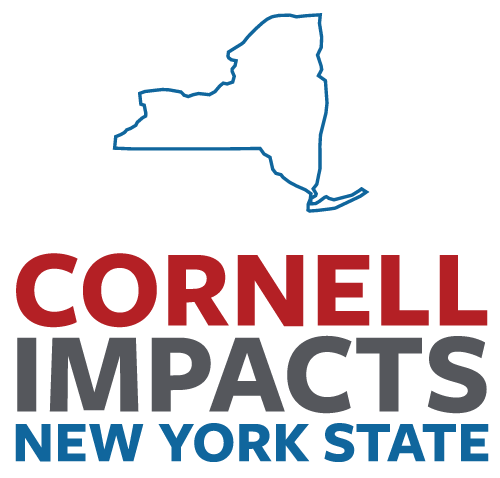As New York state prepares for a carbon-free energy future, public support for huge utility-scale solar farms - crucial for reaching the state's energy goals - is much lower than support for smaller solar projects, according to new Cornell research, forthcoming in Energy Research & Social Science (April 2022.)
This work suggests that a reappraisal may be needed to move large-scale solar development forward or the need to consider other options.
"New Yorkers strongly support the idea of using solar energy," said co-author Roberta Nilson, a doctoral student in the Department of Natural Resources and the Environment, in the College of Agriculture and Life Sciences. "But after our survey and after speaking with hundreds of people, we find that many upstate residents feel caught off-guard by the enormity of utility-scale solar arrays."
In the western U.S., enormous solar arrays - such as Topaz Solar Farm in California, which sits on nearly 6 square miles - have been built and can easily light more than 160,000 homes.
New York now has 3.3 gigawatts of solar capacity, according to the New York State Energy Research and Development Authority. The state's Climate Leadership and Community Protection Act (CLCPA) directs that an additional 3 gigawatts solar energy should be online by 2025. The state plans to achieve a decarbonized electric grid by 2040, according to CLCPA.
Constructing utility-scale solar farms could significantly improve the likelihood of reaching New York's decarbonization goals, Nilson said.
There are about 40 large solar array projects (average size 119 megawatts) proposed for the state's western, central and northern regions, but none have been constructed. The state is developing a "scoping plan" to map out CLCPA progress.
Respondents to the Cornell survey indicated that support for rooftop solar is strongest at a mean score of 4.37 on a five-point scale. Support for community solar achieved a 3.94 mean score, and the utility-scale solar had the lowest mean score of 3.04, according to the paper.
National polls always show high support for solar power. "Everybody likes solar energy, everybody wants solar energy, it's a good thing. It's motherhood and apple pie," said co-author Richard Stedman, professor and chair of the Department of Natural Resources and the Environment (CALS). "But the devil is in the details. Solar arrays of this magnitude are more common in the western U.S., but New Yorkers have never seen it, so when they express support, most of them aren't drawing on direct experience."
Nilson said that New York residents' public perception and support of solar energy is based on smaller, community-size projects. "There are other potential ways to achieve the state's energy goals, but large-scale projects seem to be the most economical," she said. "These projects also come with other trade-offs, like impacts to the available agricultural lands and wildlife habitat. For many people they threaten the cherished rural character of upstate New York. These are important trade-offs to consider.
The research's undertones also point to acknowledging the economic impact and anxiety for fairness felt by upstate residents. "There is opportunity to support local upstate economies," Nilson said. "But there is the potential that primary economic benefits are going to be extracted. The survey and interviews tell me that residents are concerned with being treated equitably."
This developing market is new and unfamiliar, said Stedman. "People want to know what benefits to expect locally," he said. "Unfortunately, the current configuration of the energy grid makes it very difficult for these large installations to provide energy to local communities.
"Although landowners may earn substantial revenues from leasing their land, we don't yet have good information about how these revenues would circulate through the local and regional economy," Stedman said. "There are some real concerns about repercussions to landscape and wildlife habitat, and no clear sense of the local benefits."
This research, "Are Big and Small Solar Separate Things?: The Importance of Scale in Public Support For Solar Energy Development in Upstate New York," was supported by Cornell's Center for the Study of Inequality and funded by the National Institute of Food and Agriculture, U.S. Department of Agriculture.
Stedman is a faculty fellow at the Cornell Atkinson Center for Sustainability.







